Rosa Bonheur, French
Though Neo-Classicism and Romanticism were popular styles of the 1800's, REALIST painters chose just that - real people, not mythological ones. You would be surprised at how much outrage paintings of the everyday world caused. Noone wanted to see animals or workers in the field - how common!! But Zeus or Venus, now there were subjects worth painting!
And in the 1800's a LADY just DID NOT
go to slaughterhouses, horse fairs, or cattle markets! Ms.
Bonheur wore men's clothing (by special dispensation from the police)
to make sketching
and painting easier, had short hair (oh, MY!), and could PAINT. Like
Picasso, she was considered a child prodigy.
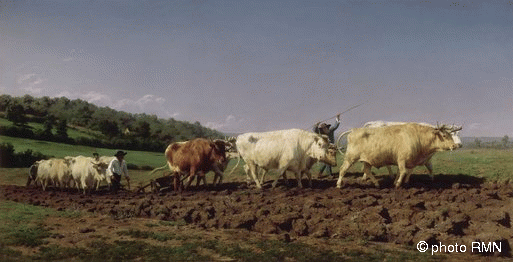 |
The first painting for which she was became famous is Ploughing in Nevers . This painting was commissioned by the French government. |
"Bonheur began work on The Horse Fair in 1852. For a year and a half, she made sketches twice a week at the horse market in Paris, on the boulevard de l'Hôpital, dressing as a man in order to attract less attention from the horse dealers and buyers. The picture shows with accuracy the trees lining the boulevard and the cupola of the Hôpital de la Salpêtrière nearby." MetMuseum.org, dec. 08 |
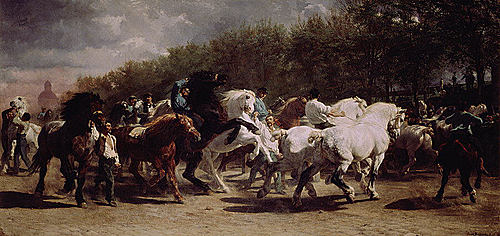 |
The Horse Fair (1853) was a huge success when it toured England (the Queen loved it), but when offered for sale to the community (Bordeaux) where Bonheur lived, it was refused! It was sold to an art dealer in London, then an American patron of art, and in time came to be donated to the Metropolitan Museum of Art in New York City.
Ms. Bonheur worked in oil paints, graphite, watercolors, and sculpture, which was unusual for a woman, and she did not restrict her work to a size considered suitable for a lady. The Horse Fair was 8 ft high x 16.5 ft. wide. She later painted a much smaller copy for the National Gallery of Art in London.
In many older text books the captions under this painting reads R. Bonheur, and no reference is made to the fact that ROSA is (gasp) a woman. Too funny. While art historians could manage to forget this fact, they couldn't leave out the paintings completely, as she is one of the best painter of animals in history, and a leading Realist painter.
Bonheur was more popular in England than in France; English and American collectors purchases many portraits of pets, wildlife, & farm animals. She painted many scenes from her farm in France, where she kept not only farm animals but many wild ones, including a lion that scared off visitors.
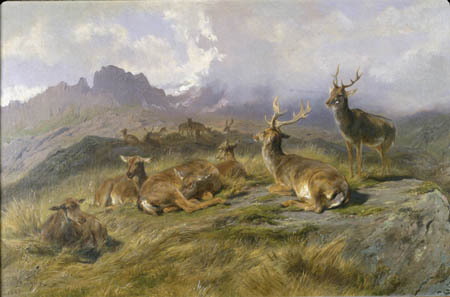
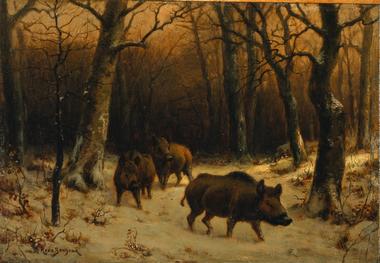
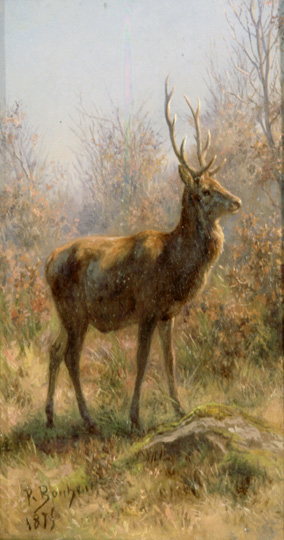
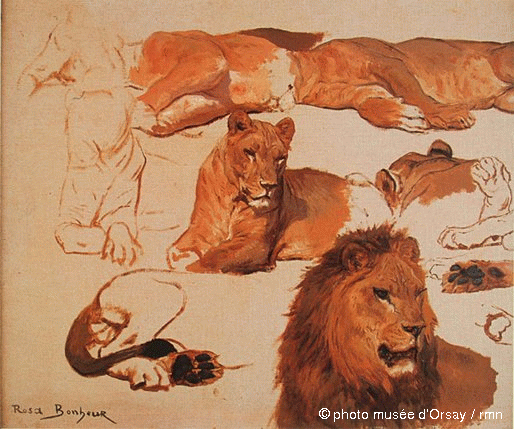
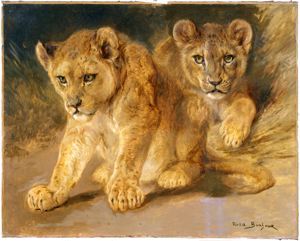
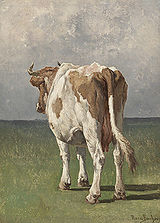
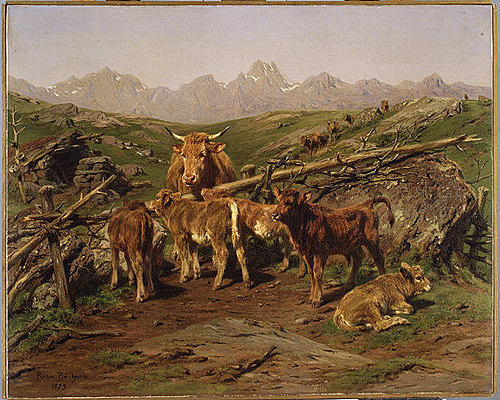
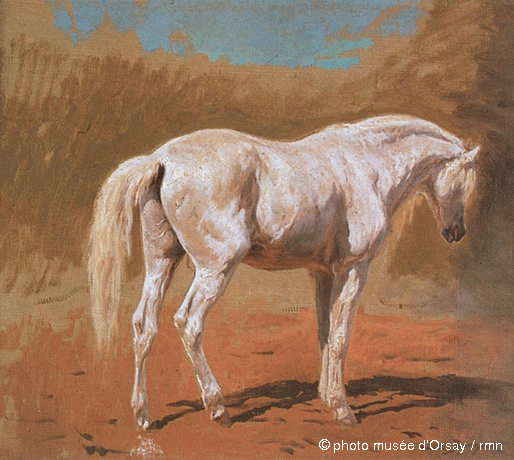
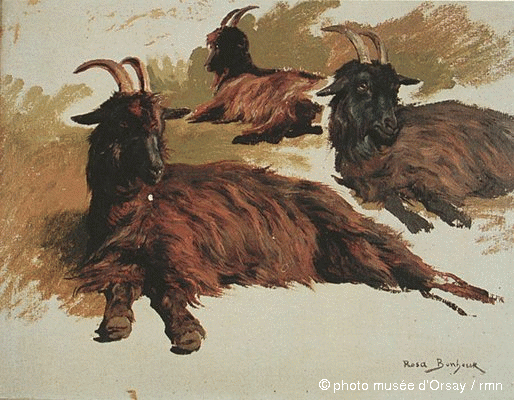
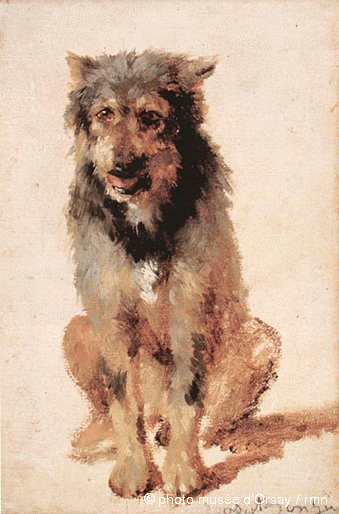
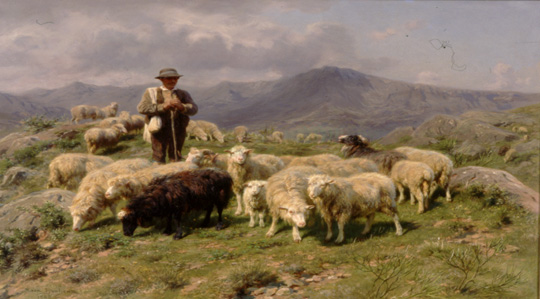
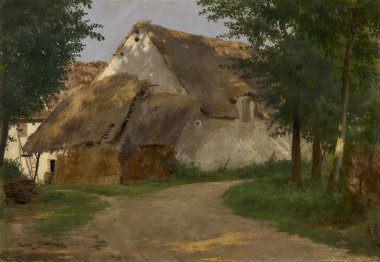
More works by Rosa Bonheur at the Fine Arts Museums of San Fransisco
The Musée d'Orsay collection of Bonheur art works